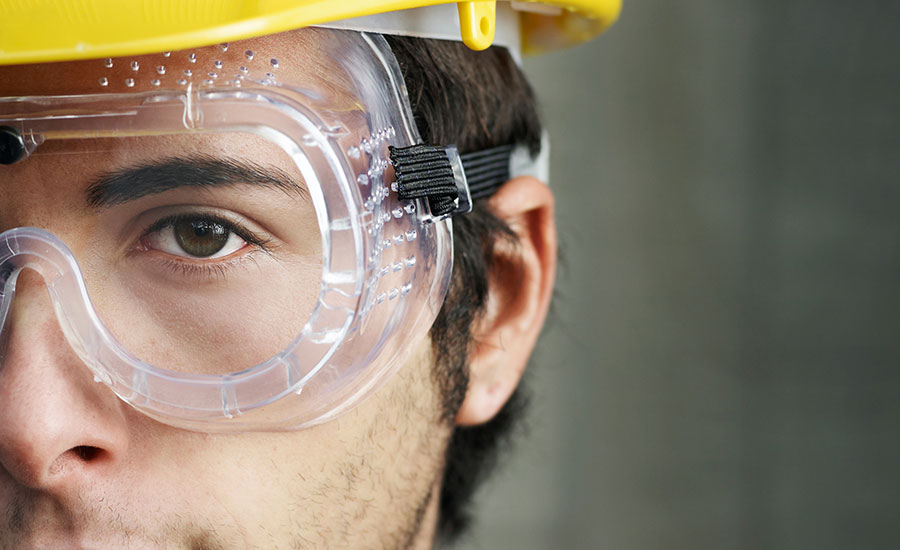
Our eyes are invaluable, irreplaceable assets that enable us to perceive the world around us. Yet, they are also incredibly delicate and susceptible to injury and damage. Whether at work, engaging in sports, or enjoying the great outdoors, our eyes face various hazards daily. Eye protection is not just a precaution; it is an essential practice that can safeguard our vision and preserve the gift of sight. In this article, Dr. Zuhal Butuner delves into the significance of eye protection, the potential risks to our eyes, and the measures we can take to shield our vision.
1. Workplace Eye Safety
Work-related eye injuries are a prevalent concern in numerous industries. According to the National Institute for Occupational Safety and Health (NIOSH), around 2,000 U.S. workers experience job-related eye injuries each day, with construction, manufacturing, and healthcare sectors being particularly vulnerable. These injuries often result from flying debris, chemicals, sparks, or intense light exposure.
To mitigate these risks, employers must prioritize eye safety by implementing proper safety protocols and providing appropriate eye protection gear. Workers should be educated on potential hazards and the proper use of protective eyewear, such as safety glasses, goggles, or face shields. Wearing the correct eye protection can significantly reduce the risk of eye injuries and maintain a safe working environment.
2. Sports and Recreational Activities
Sports and recreational activities can pose significant risks to our eyes, particularly those involving fast-moving objects, projectiles, or potential impacts. Activities like basketball, baseball, racquet sports, and water sports may lead to eye injuries if proper eye protection is not worn.
Using sports-specific goggles or helmets with protective visors can shield the eyes from harm without compromising performance. Athletes, coaches, and parents must recognize the importance of eye protection in sports and encourage the use of appropriate gear to avoid vision-threatening accidents.
3. Shielding Eyes from Harmful UV Rays
The sun’s ultraviolet (UV) radiation is a hidden threat to eye health. Long-term exposure to UV rays without proper eye protection can increase the risk of cataracts, macular degeneration, and other eye conditions. Even on overcast days, UV rays can still pose a risk to our eyes.
Wearing sunglasses that offer 100% UV protection can significantly reduce our eyes’ exposure to harmful rays. Look for sunglasses that block both UVA and UVB rays and provide adequate coverage to shield the eyes and the delicate skin around them.
4. Digital Eye Strain Protection
In the digital age, many of us spend extended hours in front of digital screens, such as computers, smartphones, and tablets. Prolonged screen time can lead to digital eye strain, also known as computer vision syndrome, causing symptoms like dry eyes, headaches, and blurred vision.
To protect our eyes from digital eye strain, follow the 20-20-20 rule: every 20 minutes, take a 20-second break, and look at something 20 feet away. Additionally, consider using blue light filters or computer glasses to reduce the amount of blue light emitted from screens, which can help alleviate digital eye strain.
5. Outdoor Eye Protection
Engaging in outdoor activities exposes our eyes to potential hazards, such as airborne particles, dust, wind, and foreign objects. Whether it’s gardening, DIY projects, or cycling, wearing appropriate eye protection, such as safety glasses or goggles, can prevent debris from entering the eyes and causing injuries.
6. Avoiding Harmful Substances
Chemicals and hazardous substances can pose significant risks to our eyes if they come into contact with them. When handling chemicals or participating in activities involving potential exposure to harmful substances, wear safety goggles or face shields as a protective barrier for the eyes.
Conclusion
Eye protection is not a choice; it is a responsibility that we owe to our precious gift of sight. By being proactive and adopting safety measures, we can shield our eyes from potential hazards in the workplace, during sports, and during recreational activities. Wearing appropriate eye protection, such as safety glasses, goggles, helmets, and sunglasses, can significantly reduce the risk of eye injuries and protect against long-term damage from harmful UV rays.
Incorporating eye protection practices into our daily routines and encouraging others to do the same will create a safer and more conscious community. By prioritizing eye safety, we can safeguard our vision, prevent unnecessary eye injuries, and preserve the beauty of the world through the windows of our soul – our eyes. Remember, taking a few simple steps today can make a significant difference in ensuring a lifetime of clear and healthy vision.